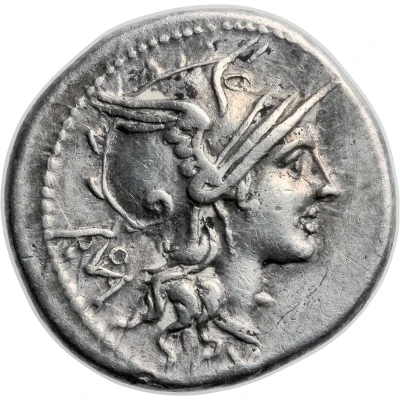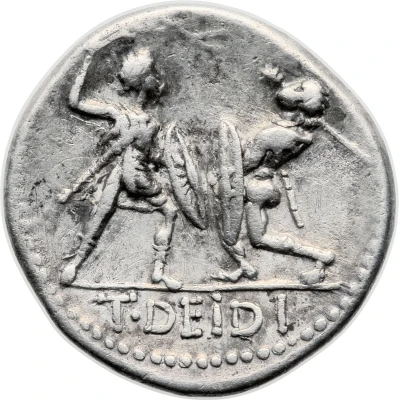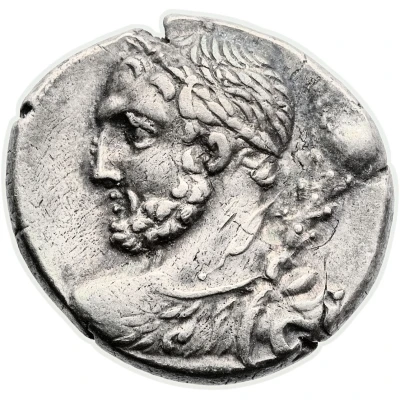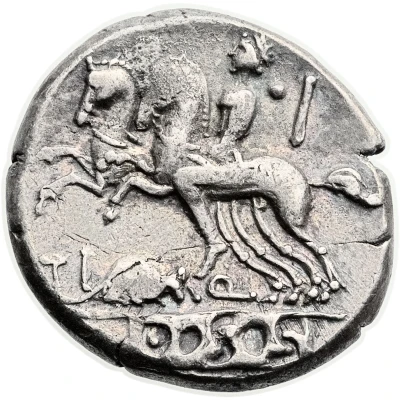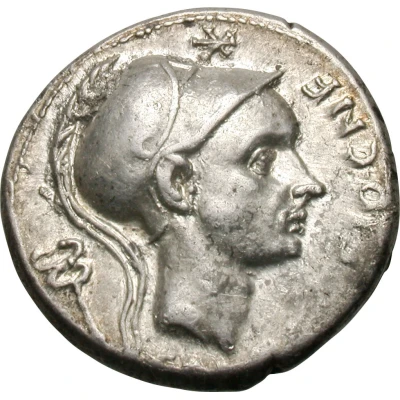
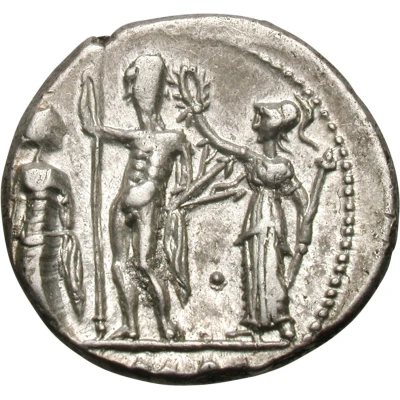

© Heritage Auctions
Denarius Cornelia: Cornelius Blasio; CN•BLASIO•CNF / ROMA 112 BC - 111 BC
| Silver | 3.96 g | 19 mm |
| Issuer | Rome › Roman Republic (509 BC - 27 BC) |
|---|---|
| Period | Republic (509 BC - 27 BC) |
| Type | Standard circulation coin |
| Years | 112 BC - 111 BC |
| Value | Denarius (1) |
| Currency | Denarius of 16 Asses (141 – 27 BC) |
| Composition | Silver |
| Weight | 3.96 g |
| Diameter | 19 mm |
| Shape | Round (irregular) |
| Technique | Hammered |
| Orientation | Variable alignment ↺ |
| Demonetized | Yes |
| Updated | 2024-10-06 |
| Numista | N#66923 |
|---|---|
| Rarity index | 89% |
Reverse
The Capitoline Triad - Jupiter naked, holding sceptre in right hand and thunderbolt in left hand, standing facing between Juno on left and Minerva on right; Minerva crowning Jupiter, sometimes palm-branch between them.
Greek letter, monogram or symbol in field.
ROMA in exergue, sometimes divided by an eagle.
Script: Latin
Lettering: ROMA
Comment
The gens Cornelia was one of the most distinguished Roman gentes, and produced a greater number of illustrious men than any other house at Rome. Servius Cornelius Cossus Maluginensis was first to achieve the consulship in 485 BC. The gens was a major contributor to the highest offices of the Republic, and contested for consulships with the Fabii and the Valerii from the 3rd century BC. Over thirty percent of all consulships were held by men from Cornelii; several great commanders also came from this family.Crawford rejects the possibility of Scipio Africanus as obverse head.
Interesting fact
One interesting fact about this coin is that it features a rare and unique design, with the portrait of Cornelia Africana, the mother of the Gracchi brothers, on the obverse, and a representation of the goddess Roma on the reverse. This coin was minted during a time of significant political and social change in Rome, and its design reflects the cultural and historical context of the Roman Republic during that period.
